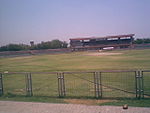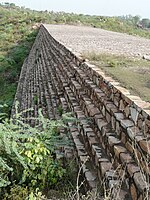Pali village
Pali is an Indian village in the NIT area of Faridabad city of Faridabad district under Faridabad Lok Sabha constituency of Haryana state, well known for being biggest crusher zone of Asia, that also has a seasonal waterfall. It is the part of the Northern Aravalli leopard wildlife corridor, an important wildlife corridor which starts from the Sariska National Park in Rajasthan, passes through Nuh, Faridabad and Gurugram districts of Haryana and ends at Delhi Ridge.The village is now a southwestern suburb of Faridabad city, located 11 kilometres (6.8 mi) away from the city centre on the MDR137 and "Pali-Badkhal road". It is 9 km northwest of Ballabhgarh the MDR133, 27 km east of Sohna on MDR133, 37 kilometres (23 mi) east of Gurgaon city.
Excerpt from the Wikipedia article Pali village (License: CC BY-SA 3.0, Authors).Pali village
MVN - Pali Crusher Zone Road, Faridabad
Geographical coordinates (GPS) Address Nearby Places Show on map
Geographical coordinates (GPS)
| Latitude | Longitude |
|---|---|
| N 28.396666666667 ° | E 77.230833333333 ° |
Address
MVN - Pali Crusher Zone Road
MVN - Pali Crusher Zone Road
121001 Faridabad
Haryana, India
Open on Google Maps






